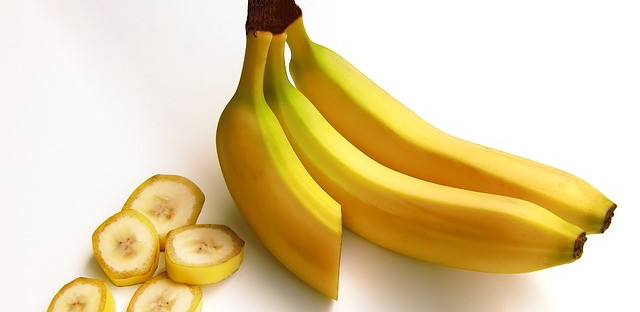I earn commissions if you shop through the links below at no additional cost to you.
Last Updated on March 24, 2023 by Jeremy
When people think banana, they associate it with monkeys. Or into delicious bread.
Some also love bananas for their daily source of potassium, but do we know what is the nutrition facts of a banana?
This article is going to peel back all the banana nutritional info hiding in this little snack.
Introduction of the Banana
Native to Southeast Asia, this plant of the ‘Musa’ family grows in over 150 countries in the world with warmer climates. Bananas also come in many forms as well as colors, like green and red. With over 1000 varieties, there’s bound to be some interesting fruit. First, let’s split bananas into two categories to better understand this popular item.
Dessert Bananas
Most bananas of this category are used for eating raw, as well as baking, adding to smoothies, making pies or pancakes. Some varieties include:
- Cavendish Bananas – most common
- Gros Michel – not as available as Cavendish
- Lady Finger – fruit is 4-5 inches long and sweet; can be used for portion-controlled snacks for kids
- Blue Java – vanilla-like ice cream flavor; AKA ‘Ice Cream Bananas’
- Manzano – known as ‘apple bananas’
- Red Bananas – red, purple skin with slight raspberry earthy flavor
- Goldfinger Bananas – native to Honduras
- Nanjangud Banana – most important crop in India
- Praying Hands – grows two adjoining ‘hands’ that merge together in a prayer formation
Plantain or Cooking Bananas
These varieties lack the sugar like dessert varieties which make them better for cooking. Their bland, high starch content can be boiled, fried or roasted; although, they can be consumed raw.
- Orinoco – hardy; survives in cold climates and winds. When ripe the texture is silky and soft with a starchy, sweet taste
- Fehi – more nutritious and delicious when boiled or baked. The fruit has orange-red skin with yellow-orange flesh
- Bluggoe – starchy texture that can be eaten raw, though most use for cooking only
- Macho Plantain – common in Florida. Perfect for roasting on the grill or to fry or sauté
- Pisang Raja – popular variety in Indonesia for the making of banana pancakes
Nutrition Facts of a Banana
For one medium-sized banana:
- Calories ==> 89 – 110
- Protein ==> 1.1 grams
- Carbs ==> 22.8 grams
- Sugar ==> 12.2 grams
- Fiber ==> 2.6 grams
- Fat ==> 0.3 grams
- Water ==> 75%
The carbs are comprised of starch (in unripe bananas) and sugar (in ripe bananas). When the ripening process happens, the carbs are converted to sugars, lowering their amount to less than 1%. The sugars will increase to reach more than 16% of the fresh weight.
When bananas are unripe, a majority of the starch is ‘resistant starch’ which passes through the gut undigested until it gets to the large intestine. The bacteria ferment the starch to form a ‘short-chained fatty acid’ called butyrate, which aids in good gut health. When they ripen, pectin, a water-soluble fiber, increases making it the main reason to turn bananas soft.
Is eating a banana daily healthy? If you eat a banana after a meal, the rise in blood sugar will be moderated due to the pectin and resistant starch.

Vitamins and Minerals
Vitamin B6
- easily digested and is 25% daily dose
- aids in production of red blood cells
- turns fats and carbs into energy
- absorbs amino acids
- cleanses the liver and kidneys
- assists in keeping a healthy mind
- very beneficial to development of fetus in womb during pregnancy
Vitamin C
- one fruit has 10% daily dose of vit.c
- helps cells heal after damage
- increases iron absorption
- aids in collagen production
- stregthens the body’s immune system
- helps produce serotonin, which helps regulate sleep patterns, mood and body’s response to stress
Manganese
- 10% daily dose which aids in healthy skin, nails and hair
- helps collagen production to protect skin cells from damage & works to rebuild if damage occurs
Potassium
- 10% of daily dose, or about 300-400mg
- vital for heart and blood pressure maintenance and support
Energy
- contains natural sugars (sucrose, fructose, glucose)
- gives energy without fat or increase cholesterol
- best when energy levels are low
Fiber
- 10-12% daily source
- two types – soluble and unsoluble
- soluble fiber assists in regulating blood sugar and reducing cholesterol
- unsoluble fiber aids in digestion and keeps your bowel system regular
- maintains beneficial bacteria, like a natural probiotic
Dopamine
- does not cross the blood-brain barrier, thus acts like an antioxidant
Catechin
- antioxidant flavonoid
- linked to various health benefits such as reducing the risk of heart disease
Can We Eat Banana Peels?
Most people associate the banana peel with slipping and falling. But did you know the peel IS edible?
They are not poisonous and rather highly nutritious with high levels of vitamin B6 and B12, along with magnesium and potassium.
Fiber, protein and many bio active compounds like polyphenols and carotenoids are also present.
After a thorough cleaning, the peel can be served cooked, boiled or fried, or eaten raw or blended with other fruits.
If you’re still not sure of eating the banana peel, you can always put it in your compost bin for the added nutrients for your soil.
Banana Facts
- considered berries
- have been a cultivated fruit since 8,000 B.C.
- the plant is classified as an arborescent, or tree-like perennial herb
- a bunch of bananas is called a ‘hand’ and a single fruit is a ‘finger’
- wild bananas grow in Southeast Asia, but are inedible to humans as they are studded with hard seeds
- the Cavendish variety replaced the Gros Michel after it was wiped out due to a fungus in the 1950s
- when you are experiencing low Potassium levels, some doctors may prescribe bananas instead of medication. And sometimes the prescriptions are for supplement vitamins, such as the Jamieson brand: CANADA’S MOST TRUSTED BRAND OF VITAMINS
.
Conclusion
As much information as we’ve learned about these yellow fruits, it’s obvious that we can now put to rest what the nutrition of a banana actually is; and that is it’s 100% Awesome!
For as minions have been reminding us throughout all of their movies, they love Bananas!
As such, we hope you’ve enjoyed your daily dose of nature, and please feel free to leave your banana stories and comments below!
Earth is Heart!






I had no idea that there were so many different types of bananas. I always thought that a banana is a banana but now I see you get Cavendish, red bananas and even ladies fingers. I also didn’t know that they are considered berries.
I also had no idea that you could eat the skin and in so many different ways too. I must really try frying them. Do you have any recipes using banana skins?
Thanks Michelle. Yes bananas go beyond what we were all taught to believe.
Unfortunately I don’t have any banana peel recipes however, most recently I saw one for pickled watermelon rind…